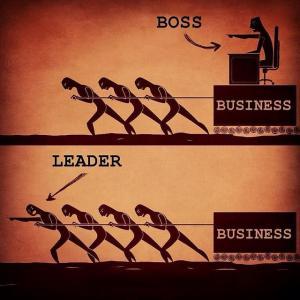
After reading Titles are Toxic by Rands I remembered a document I wrote while I was still at Mozilla. I asked for anonymous contributions from other employees at Mozilla, then wrote this piece around what other creative leaders had described. It’s time to get these thoughts into the open:
The problem:
Traditional advancement benefits are things like salary increases or title changes. While perhaps deserved, these types of benefits may not address the underlying emotional aspects of being in a Creative Leadership position.
Who are creative leaders? They’re the people who have ideas to solve problems. Many times they’re the Consiglieri to a manager. They don’t coordinate people, they coordinate ideas. They’re the people who gain merit inside of an organization, but do not “climb the ladder” in a traditional sense – e.g. they don’t move up the hierarchy.
Some creative leaders work together to provide one another with a feeling of value, and these relationships work to negate the common feelings outlined below. But other creative leaders are suffering in silence, and it’s for them I’ve created this document. My hope is that by documenting some of these emotions, we can begin to talk about strategies to eliminate them in the culture of our organizations.
The common feelings we need to address are:
Demoralization: Common understandings of business hierarchies and the cultural proliferation of these models have taught us that it’s demoralizing to never “move up”. This emotion is intensified when there are perceived lack of accolades or acknowledgements.
Isolation: Creative leaders are heads down on implementing strategies and ideas. When they look up, many times the landscape has changed, leaving them feeling like they’re out of the loop. In addition, in remote work cultures, the expectation is that creative leaders will pull information towards them (as opposed to pushing it towards other people). This is time consuming and difficult in large, diverse organizations. This causes people to ask themselves “Why couldn’t colleague X start telling me about this kind of thing?” This leads to resentments.
Resentments: Promotions going to people who have less tenure is hard to swallow, even though creative leaders might know their management team is made up of more diplomatic personalities, better suited for their roles as the faces of the organization. People in this career track tend to swing the gambit between trusting their manager(s) explicitly and believing that there’s a conversation going on behind their back. The hive mind can deepen resentments when multiple members of a team are having varying issues with MGMT.
Lack of agency: Some creative leaders feel they receive mixed signals about when they need to go through their manager before implementing ideas. Clear processes for MGMT approval should be documented and outlines (e.g. “when this costs X time, X money, X colleagues, you should talk to MGMT”). Those processes should take into account the spark of invention, creativity and the idea that management exists in support of talent, not the other way around.
Lack of context: Creative leaders often do not receive the information they need to make good decisions. This goes hand in hand with isolation. As an organization grows, it becomes worse at working openly, or it starts to put information is so many different places, so no one knows which project/program is documenting work in which place.
Being “used”: Another common meme is that creative leaders start to feel used for their ideas or implementations.
Instability: At any given moment creative leaders are asking themselves things like “Am I doing well at my job?” or “Am I about to get sacked?” It’s difficult to assess ourselves and determine new directions for our thinking. Creative leaders need to know where they stand. Organizations need implemented processes for evaluations. In asking for feedback, many times staff is met with “Good jobs” or “That’s awesome” which, while nice to hear, aren’t actually feedback (or *real* accolades).
Possible Solutions
Mentors for Managers: Given that creative leaders are often influencing strategy, perhaps it would be valuable to provide managers with designated mentors who provide feedback on management styles, initiatives and/or help determine possible resourcing.
A culture of feedback: What can management do to ensure that staff is receiving the kind of quality feedback they need?
Open conversations about professional and personal skill development: There are many opportunities for professional development. How can management make these opportunities known, and invite staff to take advantage of them?
A formalized advisory group: Would it make sense to facilitate a meeting between various creative leaders to encourage a more open dialog about their work? How might this group of people influence the organization writ large if given a space to work together?
The Producer level: Recognizing creative leaders as a particular advancement in their career paths. Creating forked hierarchies to indicate different style of contribution. If an organization is using a structure to organize accountability and responsibility, creative leaders belong in that structure, on par with their people management counterparts.
Check out, along similar lines, the concept of Servant Leadership.
Wikipedia – https://en.wikipedia.org/wiki/Servant_leadership
greenleaf.org – https://www.greenleaf.org/what-is-servant-leadership/
It’s a rich vein, and looks closely linked to me.